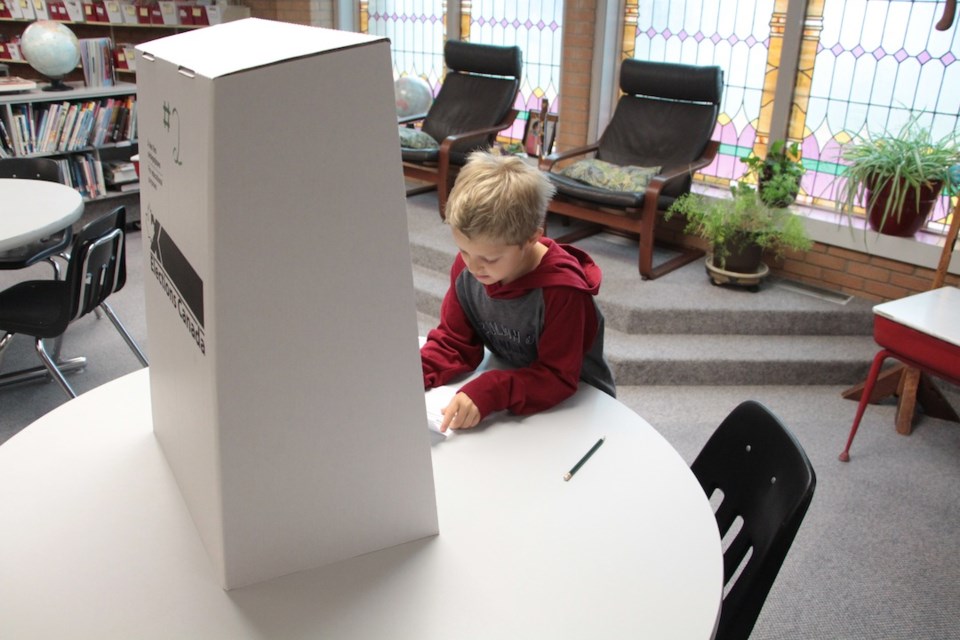The adults were not the only ones to vote in October. Students from across Yorkton took to the polls themselves. While their vote didn’t determine who was actually heading to Ottawa, it was a way to teach kids about the importance of voting as well as the issues which surround them.
Much like their parents, the kids nationally voted for a Liberal minority government, granting the party 110 seats with 22.3 per cent of the popular vote. The NDP, however, had much better luck with young people than they did with adults, edging out the Conservatives with 99 seats overall with 24.8 per cent. The Conservatives took the popular vote, with 25.1 per cent, but only 94 seats. The Greens came in fourth, but had much better luck with the kids, with 28 seats and 18.2 per cent of the vote. Finally, the Bloc Quebecois didn’t resonate with Quebec kids, with 9 seats and 1.3 per cent of the popular vote. Yves-François Blanchet did not win his seat in Beloeil—Chambly, the only leader of a major party to lose their seat with the kids.
In Yorkton-Melville, the results looked a lot like they did for the adults, with Cathay Wagantall winning for the Conservative Party. Wagantall herself was happy to learn that future voters wanted in her parliament.
“I love that! Doorknocking two weeks ago, I was walking down the street, and two neighbor kids were playing. The little boy came up to me and he said ‘you’re the one who’s going to lower our taxes!’ And I thought, you’re learning things, you’re learning at home, you’re learning at school, and that’s great.”
Quinn Haider, principal at St. Paul’s School, said that the student vote was part of a larger effort to get kids to learn about the Canadian political system. They hosted a question and answer session with the candidates before the vote itself, with questions written by students, and students were encouraged to take notes so they could make an informed decision.
“I wanted to make sure that our students had information so they weren’t just picking a name, they were actually picking the person who they think would do the best job.”
As a social studies teacher, Haider said that he wants to make what he’s teaching makes sense to the kids, to equip them for the future when they’ll be voting for the actual election.
“In a democracy, we want to make sure our citizens are informed and making the right choices. What they’ve learned here, when they’re 10 or 11, I’m hoping will carry over when they’re in their 20s, or their 50s. The same processes, do the same research, and act upon their right to vote.”




